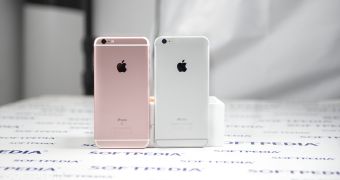The next-generation iPhone will finally ditch the 16GB version that’s currently available on the 6s lineup, with Apple expected to go for a storage upgrade to the base model.
A report by the Wall Street Journal and citing sources familiar with the matter claims that the entry-level iPhone will come with 32GB of storage, instead of 16GB as is the case with the existing models. No details have been offered, but it’s very clear what Apple is aiming for with this change.
First of all, it’s worth mentioning that this isn’t the first time we’re hearing about such an upgrade, so the chances are that it’s true and the next iPhone will no longer come with a 16GB version.
Second of all, it makes sense for Apple to increase the minimum storage capacity of the iPhone because of the other upgrades that it applies to the device.
At this point, the 16GB iPhone comes with about 11GB of available storage because of the space required by iOS and the pre-installed apps, and without microSD card support, it’s very difficult for owners of this model to actually build a large collection of photos and videos.
Better cameras, larger photos
The next-generation iPhones will come with upgraded cameras, with the standard 4.7-inch version to feature a larger and improved unit, while the Plus model will boast a dual-camera configuration. As a result, each photo will be larger, so with just 16GB of storage, out of which 5GB is not even available, buyers would really have a hard time using an iPhone for storing photos, music, and videos.
At the same time, it’s believed that Apple is planning to include a 256GB version of the iPhone in the next lineup, but for the moment, reports are still contradictory here. There are sources who claim that the 256GB version would only be available on the Plus models while others indicate that Apple wants to offer it on absolutely all models.
Certainly, a storage upgrade will take place, and offering both 32GB and 256GB version does make sense, but we’ll have to wait until September, when the next iPhone sees daylight, to find out how much of this is true.

 14 DAY TRIAL //
14 DAY TRIAL //